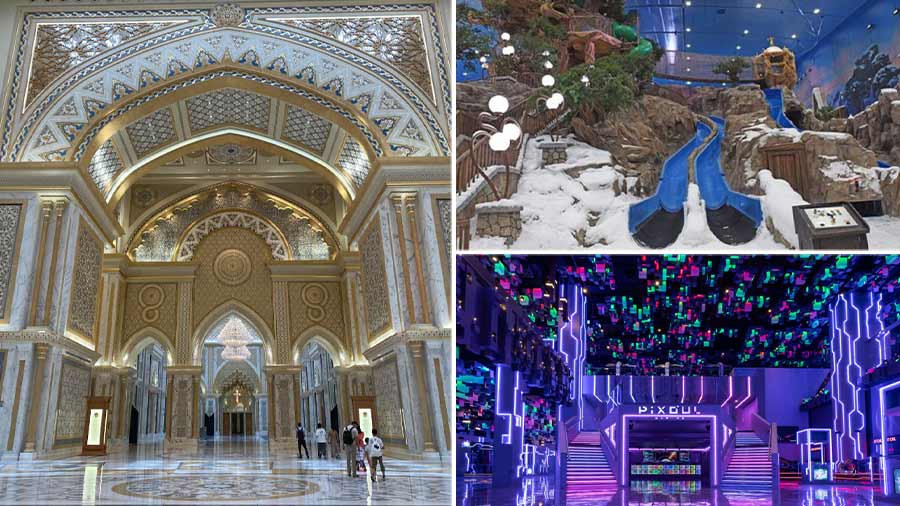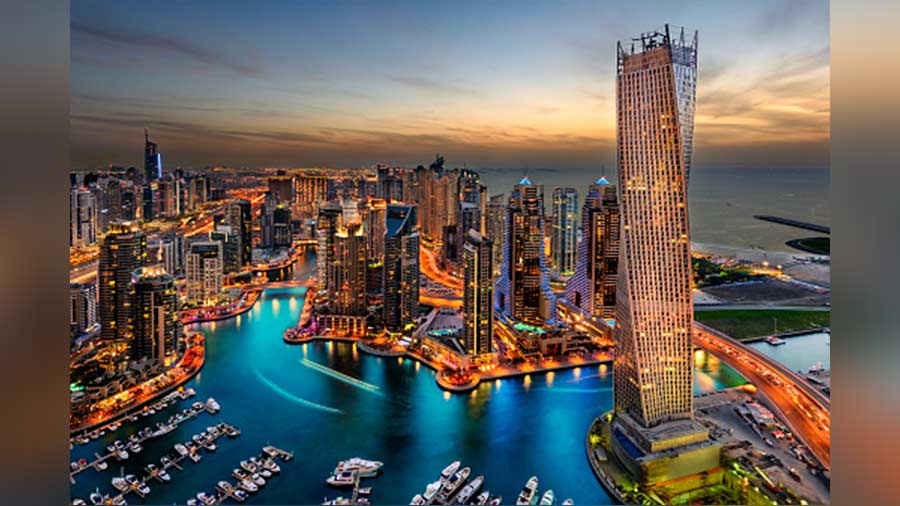Under the piercing afternoon sun, our motorised wooden dhow pulls away from the jetty towards the Suwaidi Pearl Farm — a wooden deck located in the midst of a lagoon. Started by Abdulla Rashed Al Suwaidi in 2004, the farm, in the village of Al Rams in the northern corner of Ras Al Khaimah (RAK), offers a rare chance to delve into a bygone era. Before the discovery of oil in the region, money was to be made almost entirely from fishing, and pearling or pearl diving.
One of the seven emirates that form the United Arab Emirates, RAK, about an hour away by road from Dubai, is a far cry from the high-octane pace of Dubai and Abu Dhabi. Known for its incredible mountain scenery, burnt orange desert and an undulating coastline, life here has always been tied to the elements.
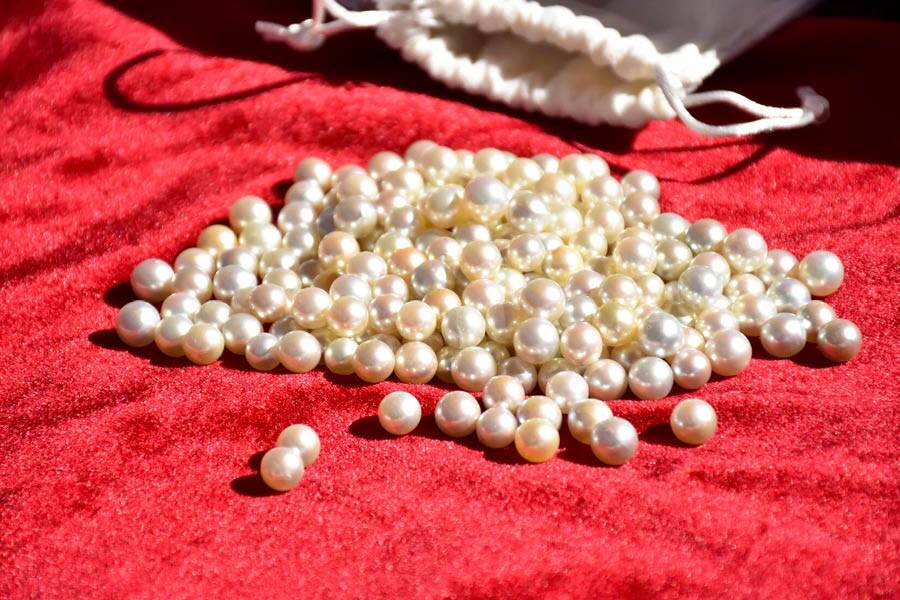
Pearls from Ras Al Khaimah, along with those from Bahrain, were once considered to be the finest in the world
A way of life
Suwaidi was a young boy when he watched his grandfather and father take off for months on voyages not knowing if they would return. Pearling was a perilous profession but it was also a way of life for the people living along the coast. At its peak 22,000 men from across the emirates were involved with the profession. In his book, Sea of Pearls, archeologist, Robert Carter, states that 65-80 per cent of the world’s pearls came from the Gulf region. Of these, ones from Bahrain and Ras Al Khaimah were considered to be the finest.
Around the 1930s, with the advent of commercial pearling, the traditional industry across the Arab world collapsed. Cultured pearls were cheaper and easier to produce. Suwaidi’s father and grandfather, and many pearlers like them, were forced to retire or move to other lucrative jobs. Today, all that remains are stories. In a quest to preserve his family and indeed the region's legacy, Suwaidi started the pearl farm and opened it to visitors to share the incredible history of the profession.
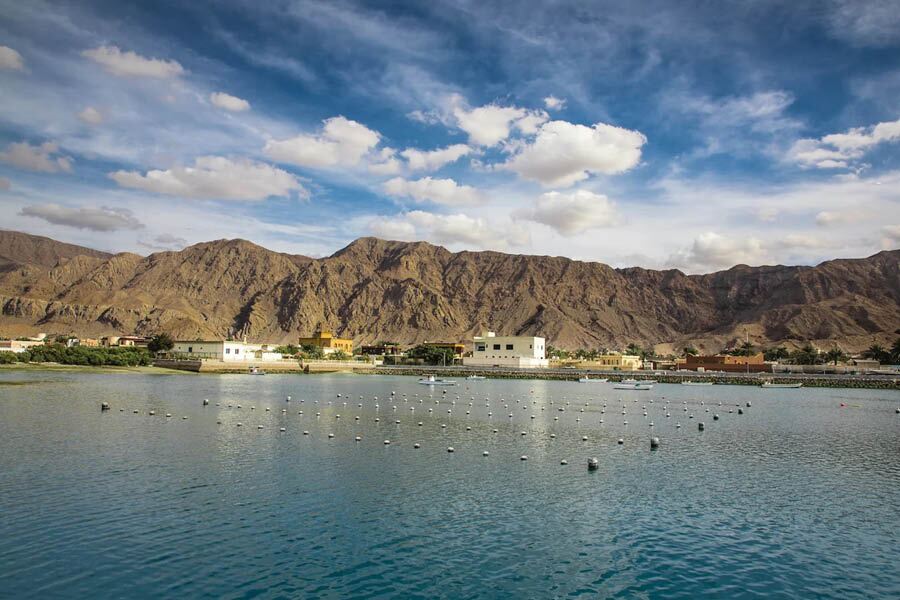
Nets used in oyster farming in the water around Al Rams village, where the Suwaidi Pearl Farm is located
Into the pearly waters
I was transfixed the first time I saw a pearl diver’s model in the dark recesses of the Dubai Museum. Spotlights illuminated a life-size mannequin wearing a white cotton outfit, his nose held shut by a turtle bone clip, ends of his fingers covered by small leather caps and his feet tied to stone weights by coir rope. Since then I have devoured books and articles about the profession, and at the Suwaidi farm, I finally get a chance to go deeper.
As the boat goes further into the lagoon, the shapes of the buildings near the jetty turn into hazy outlines and the dramatic Hajjar mountains and thick mangroves edging it draw all attention. On the deck, large maps, illustrated exhibits and photographs capture the nuances of the trade. Over the one and a half hours we spend on the deck, our guide takes us through the history, heydays, downfall and current projects.

Pearl divers would set sail on similar wooden dhows during the pearling season that stretched from May to August
We learn that the main pearling season stretched from May to August and during this time a pearling boat, typically a wooden dhow, would set sail and remain out at sea for weeks. With no advanced scientific equipment or paraphernalia there were precise systems in place that allowed divers to jump into the deep dark ocean in search of pearls. Each diver had a dedicated hauler who held onto the rope tied to them, and who pulled them up when the diver signalled via a tug at the attached rope. Each dive lasted no more than two or three minutes and on an average, a diver would do anything between 50-200 dives a day.
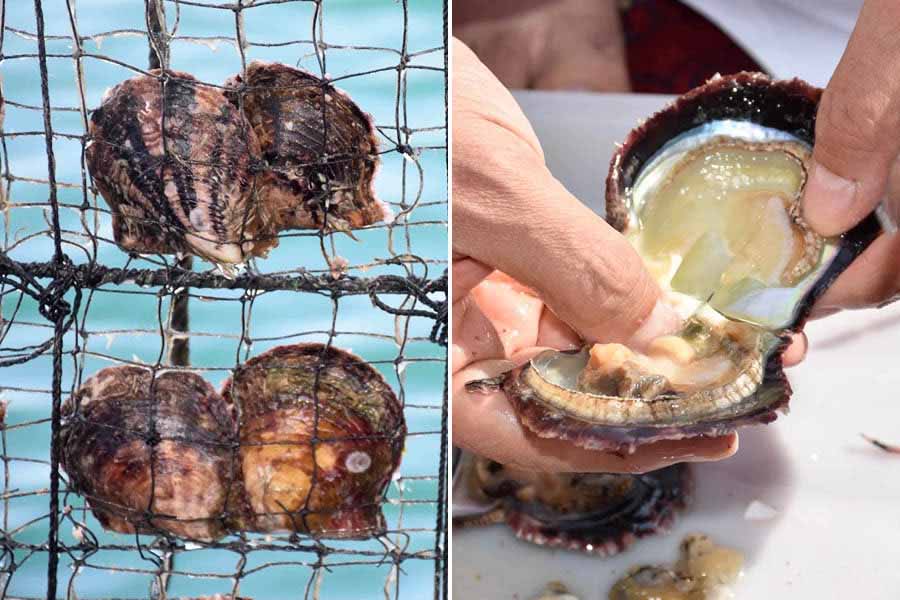
L-R: A step in the process of creating cultured pearls; and a pearl nestled inside an oyster
Precious cargo
It takes 1,000 oysters to get a yield of just 10 pearls — one big and others small. Given the enormous human effort that goes into finding pearls, each and every one is precious, but in terms of commerce, pearls are graded by their size, colour, surface, lustre and shape. A number of natural factors are at play in creating a pearl. Oysters typically open their mantle or lip to eat and breathe. When the mantle is wounded by a parasite or worm, or attacked by a crab or fish, then as part of the healing process the oyster creates a cyst, which eventually is filled by crystallised calcium carbonate, or a pearl.
Back in the day, following the dawn prayers, oysters collected from the previous day would be pried open and the pearls, washed, graded and sorted. The biggest markets for these pearls were Mumbai (then Bombay) and Europe. We sit around our guide on the traditional Arabic majlis seating and watch as he unlocks a wooden box with small red pouches inside along with tools used to grade the gems and agate weights used to weigh them. He unties one and pours out pearls of different sizes and colours onto a bright red cloth for us to see.
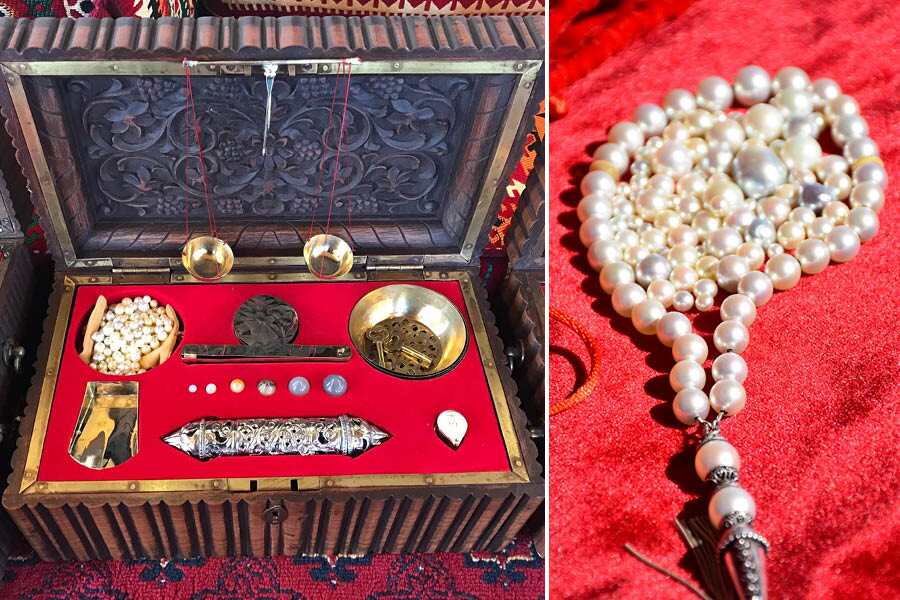
The ‘Bish-takh-tah’ is a pearling toolbox used to store pearls and tools to help extract and grade the pearls
Once everything is carefully stowed away we leave for the jetty where there’s a small showroom of pearls from Ras Al Khaimah for sale. I resist the urge to indulge but leave with my curiosity satiated with stories of incredible adventures, strong men, and a tough profession that has almost entirely vanished.


